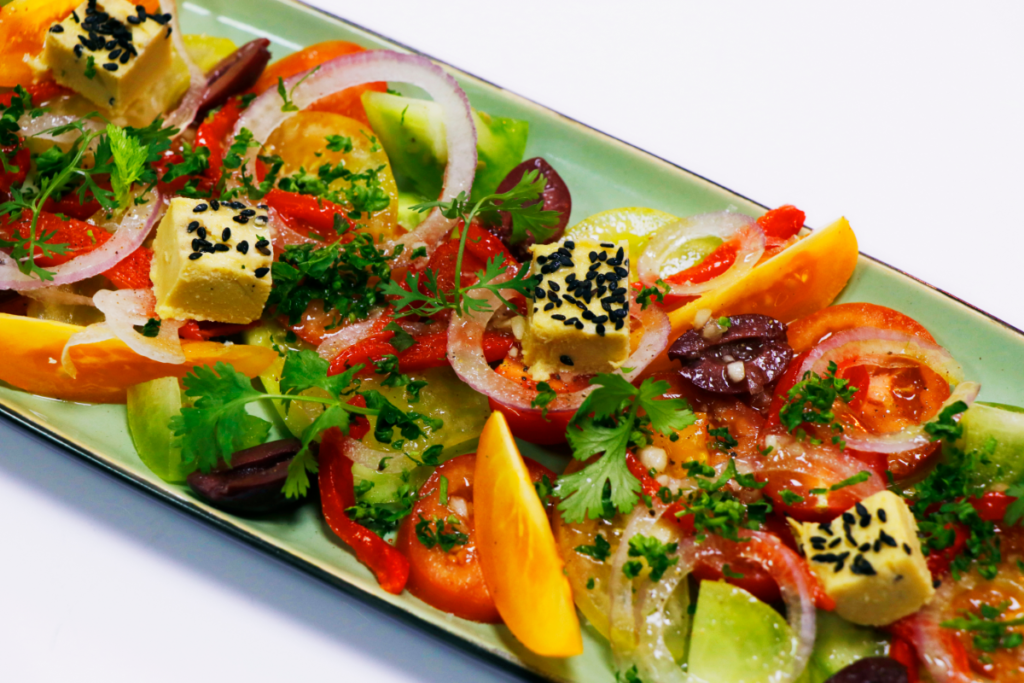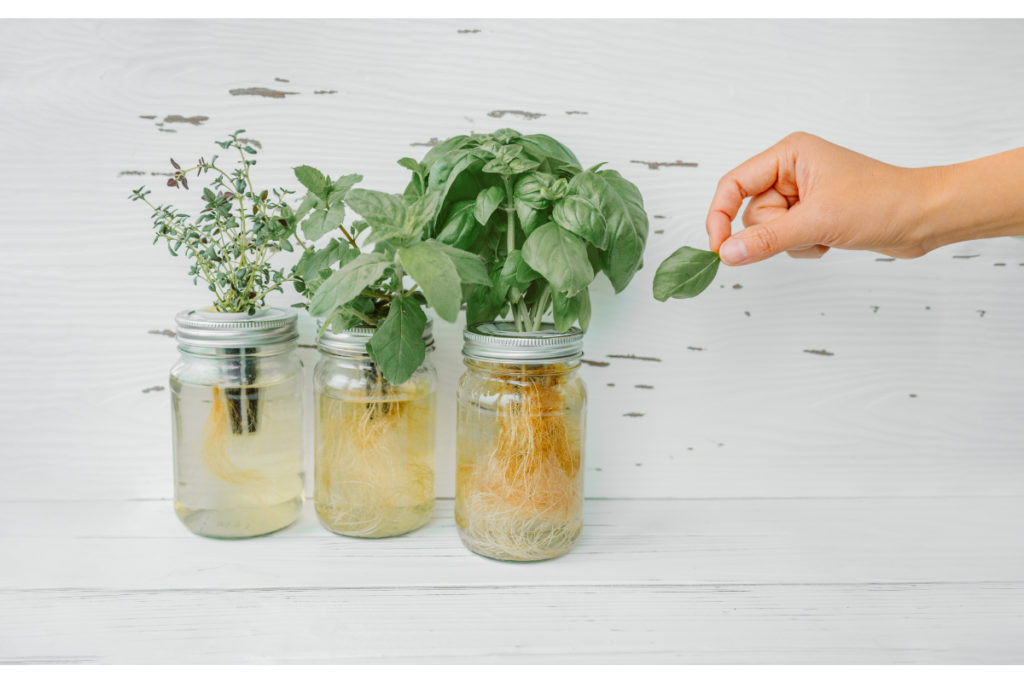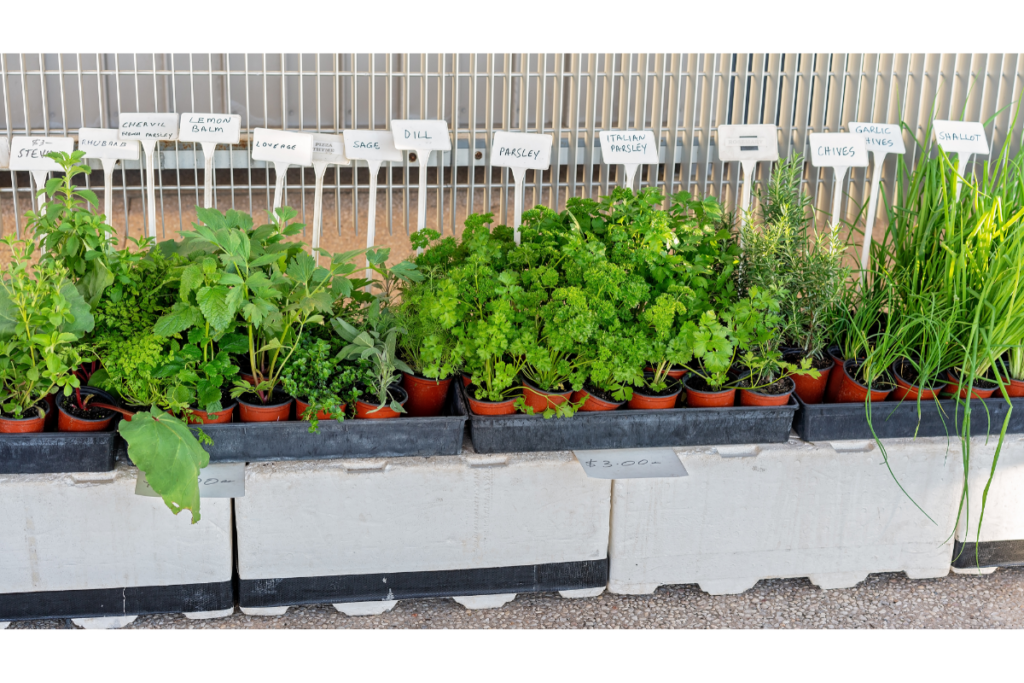Curious about heirloom herbs? Their history, and why are they special? Look no further! Learn about the mysterious appeal of heirloom herbs in this article.
Seed “antiques”—heirloom herbs—have a long history and nostalgia. Past gardeners’ tales are in these open-pollinated seeds.
Growing heirloom herbs protects our agricultural heritage, encourages biodiversity, and yields a variety of flavors. The genetic variety gives these plants varied tastes, textures, colors, and shapes.
Are you curious about heirloom herbs’ history, benefits, and garden care? Keep reading.
What Are Heirloom Herbs?

Heirloom herbs are old-fashioned herbs your grandparents may have planted. They’re unlike supermarket herbs. Heirloom herbs have been meticulously grown and saved for 50 years or more.
There are several distinctive characteristics of heirloom herbs.
- Its shapes, sizes, and colors vary. Since they’ve never been raised for conformity, they’re distinct characters.
- They taste and smell great. They taste and smell authentic because they haven’t been mass-produced.
- Herbs have histories.
- These living history books tell stories of old gardens and kitchens.
Are Heirloom Herbs Different from Regular Herbs?
The main difference is that heirloom herbs aren’t big business. They don’t have to fit a box because they’re not commercial. Their misfit status in the plant world makes them appealing. Regular herbs are often bred for longer shelf life and are the same size and shape, which might affect taste and character.
For their nostalgic taste, heirloom herbs are popular. They bind us to our predecessors’ customs. These herbs allow garden and kitchen creativity. Many claim heirloom herbs taste better. Modern rivals lack their richness of flavor and scent.
The Uses of Heirloom Herbs

Heirloom herbs are like a treasure chest of natural goodness. They’re not just pretty plants; they’re packed with flavors, fragrances, and uses. In this part of our journey into heirloom herbs, we’ll dive deep into the many ways to use these special herbs.
✔️Culinary Delights with Heirloom Herbs
Heirloom herbs are a culinary wonderland. They add amazing flavors to your dishes, making every meal more special. Here are some ways they light up the kitchen:
**Culinary Applications**
Heirloom herbs like Genovese Basil, Lemon Balm, and Thai Basil are like culinary magicians. You can sprinkle basil over your tomato salad, mix Lemon Balm into your tea, and use Thai Basil to give your stir-fries a delicious twist. They’re not just herbs; they’re the secret ingredients to pop your food.
**Flavor-Packed Recipes**
From classic Italian pesto with Genovese Basil to soothing Lemon Balm tea and the exotic flavors of Thai Basil in Southeast Asian cuisine, heirloom herbs turn ordinary recipes into extraordinary culinary experiences. They’re the key to unlocking flavors you won’t find in the average herb garden.
✔️Healing Powers and Aromatherapy
Heirloom herbs don’t just make your taste buds dance; they also have medicinal and aromatic qualities that can work wonders for your well-being.
**Medicinal Uses**
Lemon Balm, for instance, has been used for ages to soothe tensions and enhance sleep. Coriander, or cilantro, aids digestion and detoxification. These plants are nature’s medical store, treating many diseases.
**Aromatic Magic**
Your house may smell like a spa with heirloom herbs. For instance, lavender is known for its relaxing aroma. Make sachets, oils, or potpourri to fill your home with these lovely scents. Similar to a spa day at home.
✔️Ornamental Beauty in Your Garden
Heirloom herbs are not only delicious and beneficial; they can also be an eye-catching addition to your garden. They’re like colorful decorations that come back every year.
**Ornamental Uses**
Purple Ruffle Perfect example: basil, with its bright purple leaves. In garden beds or containers, its beauty may be stunning. Use it to make attractive herb gardens or decorate your outside area.
Plants like heirloom herbs are multipurpose. They improve your garden, give taste to your food, and treat many diseases naturally.
Popular Heirloom Herbs and Their Distinct Qualities

Heirloom herbs are cherished for their unique characteristics, flavors, and historical significance. These time-honored plant varieties have been passed down through generations and offer distinct qualities that set them apart from modern hybrid herbs. In this section, we will explore some popular heirloom herbs, each with its exceptional features and uses.
1: Genovese Basil: A Classic Aromatic Herb
Genovese Basil is a treasured heritage herb with a sweet scent and strong taste. An essential component in Italian pesto sauce. This herb has huge, dark green leaves up to 3 inches long, making it great for cooking. Fresh pesto, tomato dishes, pizzas, and salads taste great with Genovese Basil.
2: Lemon Balm: A Soothing and Zesty Herb
Lemon Balm, an ancestral herb with mint and lemon flavors, is wonderful. When crushed, its leaves smell nice. This plant is popular for herbal teas and infusions due to its relaxing effects. Lemon Balm adds flavor to sweets, fruit salads, and summer drinks.
3: Thai Basil: A Unique Twist on a Classic Herb
Thai Basil, a distinctive heirloom herb, offers a hint of licorice and spice to its flavor profile. Its vibrant green leaves and purple stems make it easily distinguishable. This basil variety is a staple in Southeast Asian cuisine, adding depth and fragrance to Thai curries, stir-fries, and noodle soups. Its exotic flavor and striking appearance make it a must-have for any herb garden.
4: Purple Ruffle Basil: A Beautiful and Fragrant Ornamental Herb
Purple Ruffle Basil is not just for your taste buds; it’s also a visual delight. Its purple-tinged leaves have a distinct ruffled appearance, making it an excellent choice for garden ornamental use. While it shares the sweet basil flavor, its vibrant color, and frilly leaves add a decorative touch to salad sandwiches and as a garnish for various dishes. This heirloom herb is a feast for the eyes and the palate.
5: Cilantro (Coriander): A Versatile Herb with Unique Flavors
Due to its peculiar flavor, cilantro (coriander) is an heirloom herb that splits taste buds. Mexican, Indian, and other cuisines use its crisp, lemony leaves. Some like its refreshing flavor, and others dislike it. Salsas, curries, and guacamole benefit from cilantro leaves’ freshness and taste. Whether you like it or not, cilantro is versatile and distinctive.
These traditional herbs provide variety and character to our cooking, from Genovese Basil’s classic perfume to Lemon Balm’s zesty tang and Thai Basil’s exotic overtones. Gardeners and foodies love heirloom herbs for their taste, look, or lineage.
Weighing the Pros and Cons of Heirloom Herbs
When choosing seeds for your garden, it’s essential to consider the pros and cons of different options. Here, we’ll explore the advantages and disadvantages of heirloom, open-pollinated, and hybrid seeds.
→Heirloom Seeds:
- Pros:
- Rich history and cultural significance
- Superior flavor and unique taste
- Biodiversity and genetic diversity
- Perfect for seed saving and preserving heritage varieties
- Cons:
- Less resistance to diseases and pests
- Potential variability in size and shape
→Open-Pollinated Seeds:
- Pros:
- Predictability and reliability
- Great for seed saving and developing new varieties
- Cons:
- May lack disease and pest resistance found in hybrids
- Less productive than hybrids
→Hybrid Seeds:
- Pros:
- Higher yields and improved uniformity
- Disease resistance
- Cons:
- Do not breed true-to-type, requiring purchasing new seeds each year
- Saving seeds from hybrids may lead to unpredictable results
Each type of seed has its own set of benefits and drawbacks. Ultimately, the choice depends on your gardening goals and preferences. Whether you prioritize historical significance, flavor, predictability, or productivity, there’s a seed option that’s right for you.
Where to Find Heirloom Herb Seeds

You’ve decided to explore heirloom herbs and want seeds to start your garden. There are many locations to get heritage herb seeds, and this article will cover the greatest ones.
🔴Local Garden Centers and Nurseries
Look for heritage herb seeds at your local nursery or garden shop. They provide a range of seeds and have specialists that can help you choose heirloom herbs for your location. Ask the seeds’ source to confirm quality and authenticity.
🔴Seed Suppliers Online
Internet heritage herb seed collections are huge. Many internet seed vendors specialize in heirlooms. Seed Savers Exchange, Baker Creek Heritage Seeds, and Johnny’s Selected Seeds sell real heritage herb seeds. To assist you in choosing, these providers give thorough descriptions, gardening recommendations, and user feedback.
🔴Seed Swap and Gardening Groups
Join local gardening clubs or seed swap organizations to meet other gardeners and trade heritage herb seeds. People that love heirlooms can be found. The seed exchange is popular in these groups’ activities.
🔴Heritage Seed Banks and Organizations
Several locations have heritage seed banks and organizations that promote heirloom seeds. Many of these groups value authenticity. Your support of their heritage herb seeds helps preserve these rare plant species.
Start a heritage herb garden to preserve history and enjoy old flavors in your yard.
Challenges and Considerations in Growing Heirloom Herbs
Growing heirloom herbs can be rewarding, but you must know their challenges. Consider these factors:
❕Less Disease and Pest Resistance:
Heirloom herbs may be more susceptible to diseases and pests than hybrid varieties. It’s essential to monitor your plants closely and take preventive measures, such as providing proper air circulation, practicing crop rotation, and using organic pest control methods.
❕Size, Shape, and Growth Variability:
Heirloom plants can vary in size, shape, and growth habits. This can be both a charm and a challenge. Be prepared for variations in plant size and shape, and plan your garden layout accordingly. Remember that these unique characteristics contribute to the diversity and beauty of your herb garden.
❕Specific Cultivation Needs:
Each heirloom herb has unique soil, sunshine, and watering needs. To cultivate herbs successfully, you must research their needs and provide appropriate circumstances. Heirloom plants need good soil, water, and nutrition.
You may grow heirloom plants and harvest a bounty of flavorful, unique herbs by paying attention to these factors. Growing and using heirloom herbs is worth the effort despite the hurdles.
So enjoy the charm of these heritage types and their rich flavors and smells in your garden and cooking.
Harvesting and Using Heirloom Herbs
Growing and harvesting heirloom herbs is fun and rewarding. Knowing when and how to harvest them lets you enjoy their flavors and smells. You should collect most herbs before flowering when their leaves are at their best. You can harvest different herbs by cutting the stems or plucking the leaves.
Once collected, heirloom plants can be used in many ways. You can flavor your favorite foods with fresh herbs right away. They can be dehydrated or hung in little bunches for later use. Dried herbs last months in sealed containers and keep flavor.
Culinary Uses of Heirloom Herbs
- Fresh or dried heirloom herbs flavor soups, stews, and sauces.
- Make delectable dressings and marinades by infusing olive oil or vinegar with basil, rosemary, or dill.
- Cut herbs and put them into softened butter. Spread on bread or flavor veggies and meats.
- Teas from fresh or dried herbs in hot water are calming and pleasant.
- Tinctures, syrups, and salves produced with herbs, honey, vinegar, or alcohol are homemade.
These are just a few ways to use heirloom herbs in cooking. To truly experience these heritage plants’ flavors and benefits, get creative in the kitchen and try new dishes.
These are just a few examples of using heirloom plants in culinary adventures. Get creative in the kitchen and experiment with different combinations and dishes to fully explore the unique flavors and benefits of these heritage plants.
Frequently Asked Questions
Are heirloom herbs usually passed down, and how can I get their seeds or plants?
Yes, heirloom plants are often passed down through families. Special plants tell stories. There are several ways to get their seeds or plants. Contact a family member who has grown these plants for years. They may give you seeds like a family recipe. Heirloom herb seed exchanges in gardening groups or communities are another possibility.
Does growing heirloom herbs differ from other herbs?
Growing and caring for heirloom plants is similar to other herbs. Like modern plants, they need sunlight, well-drained soil, and water. They like 6 hours of sunshine and well-draining soil. They need water when the top inch of soil dries, but not too much. Regular pruning, harvesting no more than a third of the plant, and insect monitoring are good care methods.
Can I recognize authentic heirloom herb types and avoid buying mislabeled seeds or plants?
Finding real heirloom plants and eradicating fakes requires gardening detective work. Learn about the heritage herb’s look, flavor, and distinctive qualities. Research well-established seed firms, local nurseries, and internet sites with good reviews for seeds and plants. Labels like “heirloom” and “heritage” can help, but check the seller’s trustworthiness.
Can heirloom plants be saved as seeds, and how can I preserve their purity?
Yes, you can save seeds from heirloom herbs to pass on the tradition. Robust parent plants yield robust seeds, so choose the healthiest and strongest to preserve heirloom herb seeds.
Final Words
Gardening and cooking with heirloom herbs has several benefits. Heritage varieties connect us to prior generations’ agricultural traditions and stories. Grow heirloom herbs to preserve our agricultural legacy and promote biodiversity. The genetic variety is another benefit of planting heirlooms. These plants have evolved to adapt to specific climates and growing conditions, making them stronger and more resilient. Disease susceptibility and growth habits are issues, but growing heirloom herbs is worth it. By creating ideal growing conditions and using proper cultivation methods, you can overcome these obstacles and harvest abundant, tasty herbs.

